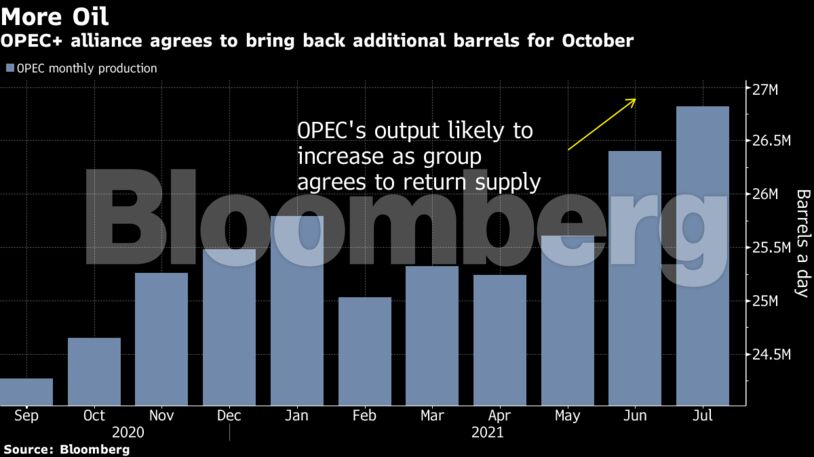Following a swift meeting on Wednesday, ministers from the Organization of Petroleum Exporting Countries and its allies ratified a 400,000 barrel-a-day increase scheduled for October. In the U.S., a government report showed a further contraction in nationwide crude inventories, while the nation’s oil infrastructure continues to grapple with Hurricane Ida’s impact.
Crude has rallied about 40% this year as consumption bounced back from the impact of the coronavirus pandemic, although the bulk of the gains came in the first half. Against that backdrop, OPEC+ has been gradually restoring more of the supply it suspended last year when the global health crisis erupted.
“Prices should be higher going into year end,” Energy Aspects head of research Amrita Sen said in a Bloomberg TV interview. High natural gas prices could boost demand for fuel oil in the winter, she said, while Hurricane Ida means “we have lost an enormous amount of hydrocarbon production.”
| Prices: |
|---|
|
Most processors that were hit by Hurricane Ida escaped major damage and are expected to be back online within three weeks, according to IHS Markit. Meanwhile the U.S. government reported that nationwide crude stockpiles sank 7.2 million barrels last week to the lowest level in almost two years. Total oil products supplied, a proxy for demand, hit the highest in data going back to 1990.
| Related coverage: |
|---|
|
Share This:




 CDN NEWS |
CDN NEWS |  US NEWS
US NEWS 






























